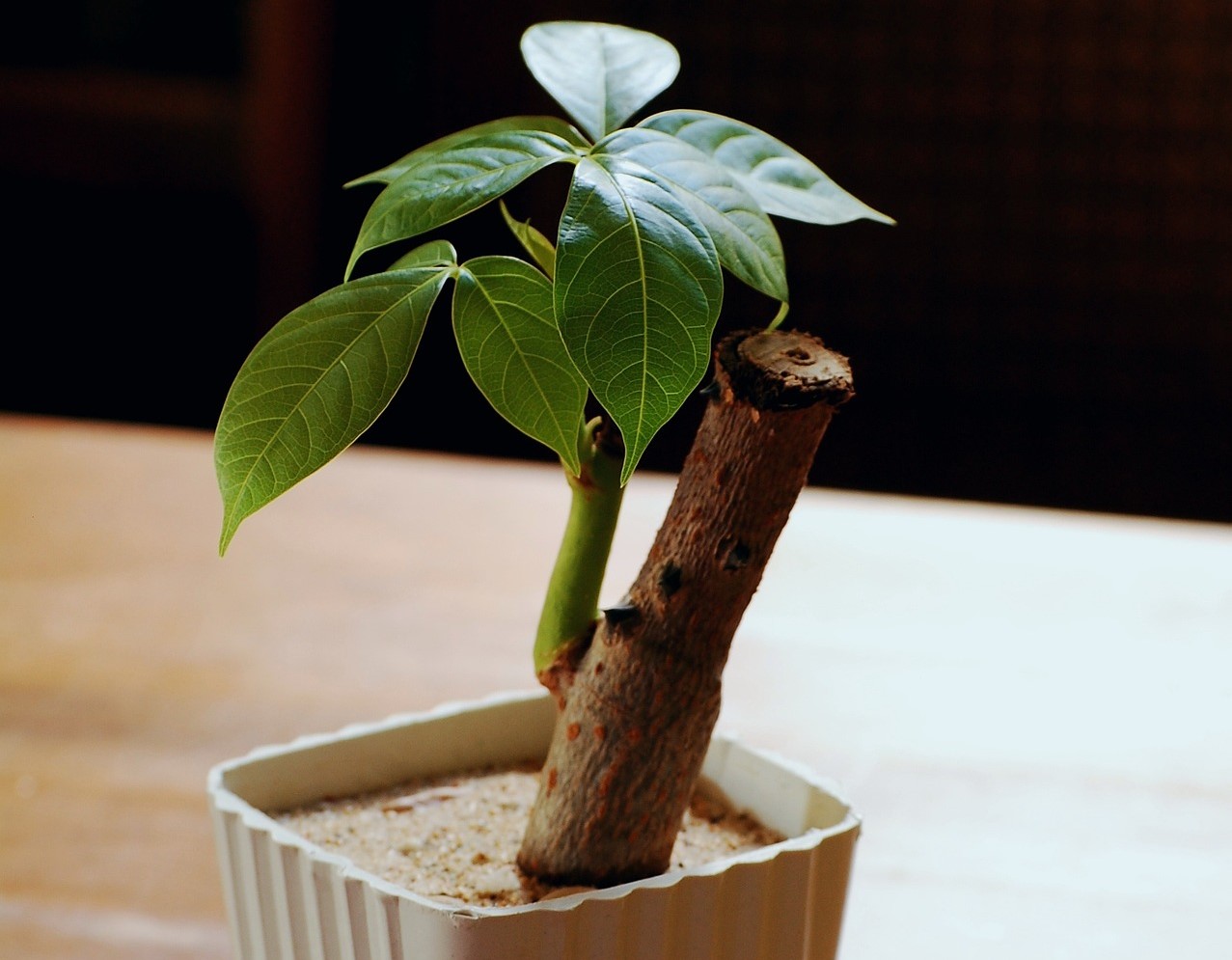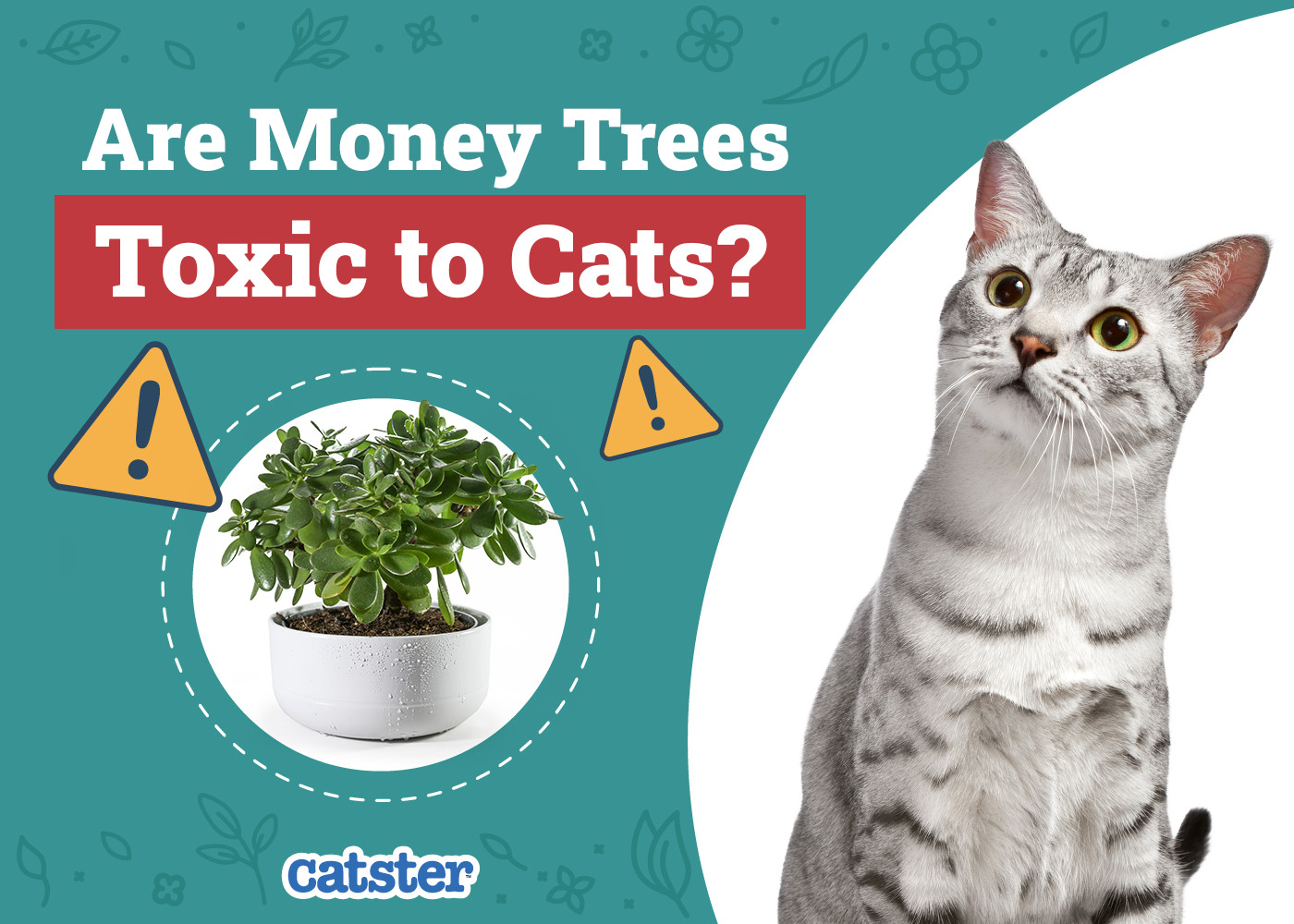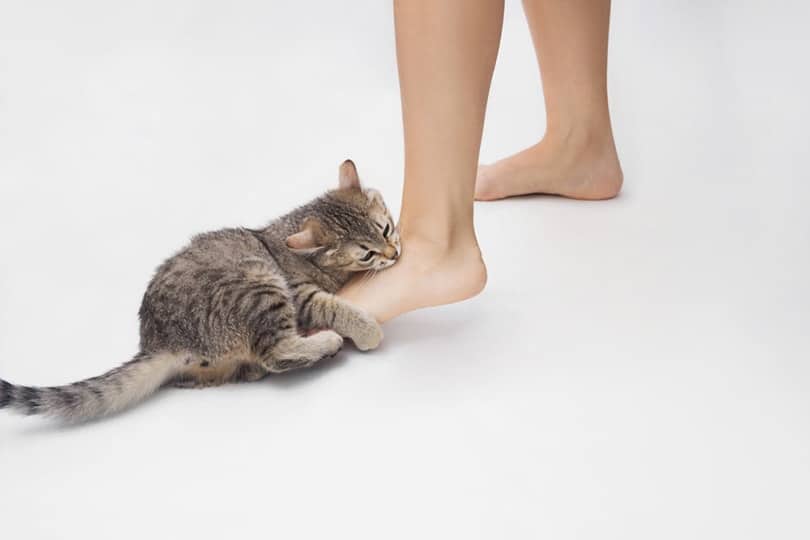Click to Skip Ahead
Money trees are great beginner houseplants thanks to them being easy to care for, not to mention their exotic, tropical look. Cat owners, however, have more to worry about, as pet parents have to be sure a houseplant won’t harm their feline friend.
Well, put another in the win column for the money tree because it’s non-toxic and completely safe for your furry friend, although we can’t say the same for the cat being safe for the tree!
So, are money trees toxic to cats? We’ll answer that question and more in the article below.

What Are Money Trees?
Money trees, technically known as Pachira aquatica, are a species of tropical tree native to Central and South America. The tree grows in swamps and is recognizable by its twisted trunk and light green leaves.
Can Money Trees Harm Cats?
We know it’s not toxic, but can it still harm your cat? Unfortunately, it can harm your furry friend as much as any other houseplant; a cat eating a lot of plant matter can lead to diarrhea, mild nausea, and vomiting.
You shouldn’t allow cats to eat your money tree since eating any part of the plant can lead to the above signs. The trees also provide no nutritional value, not to mention it’s obviously bad for the plant as well.

Why Are Cats Attracted to Money Trees?
Cats, especially young cats, play with money trees because of their dangly leaves and bright color. Cats play with plants out of boredom. Playing with your cat more or buying them interactive toys can help fix this and give you quality time with your cat as well.

How to Tell if a Plant Is Toxic
While there is no one-hundred-percent reliable way to tell if a plant is toxic, these signs can help you determine if a plant is potentially poisonous.
Milky sap, white or yellow berries, naturally shiny leaves, and being umbrella-shaped are all signs a plant may be toxic.
If you’re uncertain about which plants are safe to have around your cat, consult a veterinarian for guidance.
If you need to speak with a vet but can't get to one, head over to PangoVet. It's an online service where you can talk to a vet online and get the advice you need for your pet — all at an affordable price!
Tips for Keeping Your Cat Safe Around Toxic Houseplants
The best way to keep your cat safe from toxic houseplants is to not own toxic houseplants! But if you do own some potentially toxic houseplants and don’t want to get rid of them, then we’ll give you some tips for keeping them safe below.
If your cat can’t get to the plant, they can’t get hurt. You could put the plant up somewhere high where your cat can’t get to or in a room where the cat isn’t allowed.
Cats find the smell of citrus unpleasant, and because of this, citrus is excellent as a deterrent. You have to be careful, though—the acid in citrus can damage some plants and might irritate your furry friend’s nose.
Lastly, dangling leaves are a draw for curious cats and cause them to chew on the plants themselves. Keeping your houseplant trimmed and removing any dangling bits will make it far less interesting to your cat.


Final Thoughts
The money tree is an excellent houseplant for cat owners because it isn’t toxic to cats. Of course, don’t let your pet chew on it since it can upset the cat’s stomach, however, the tree can cause no severe harm to your cat.
There are many ways to protect your cat and your plants from one another. Following the tips above will ensure both your cat and your plants are safe from harm.
See Also:
- Are Rubber Plants Toxic to Cats? Vet-Reviewed Houseplants Examined
- Is Ponytail Palm Toxic to Cats? Vet-Reviewed Houseplants Examined
Featured Image Credit: Negin Minaei, Shutterstock










